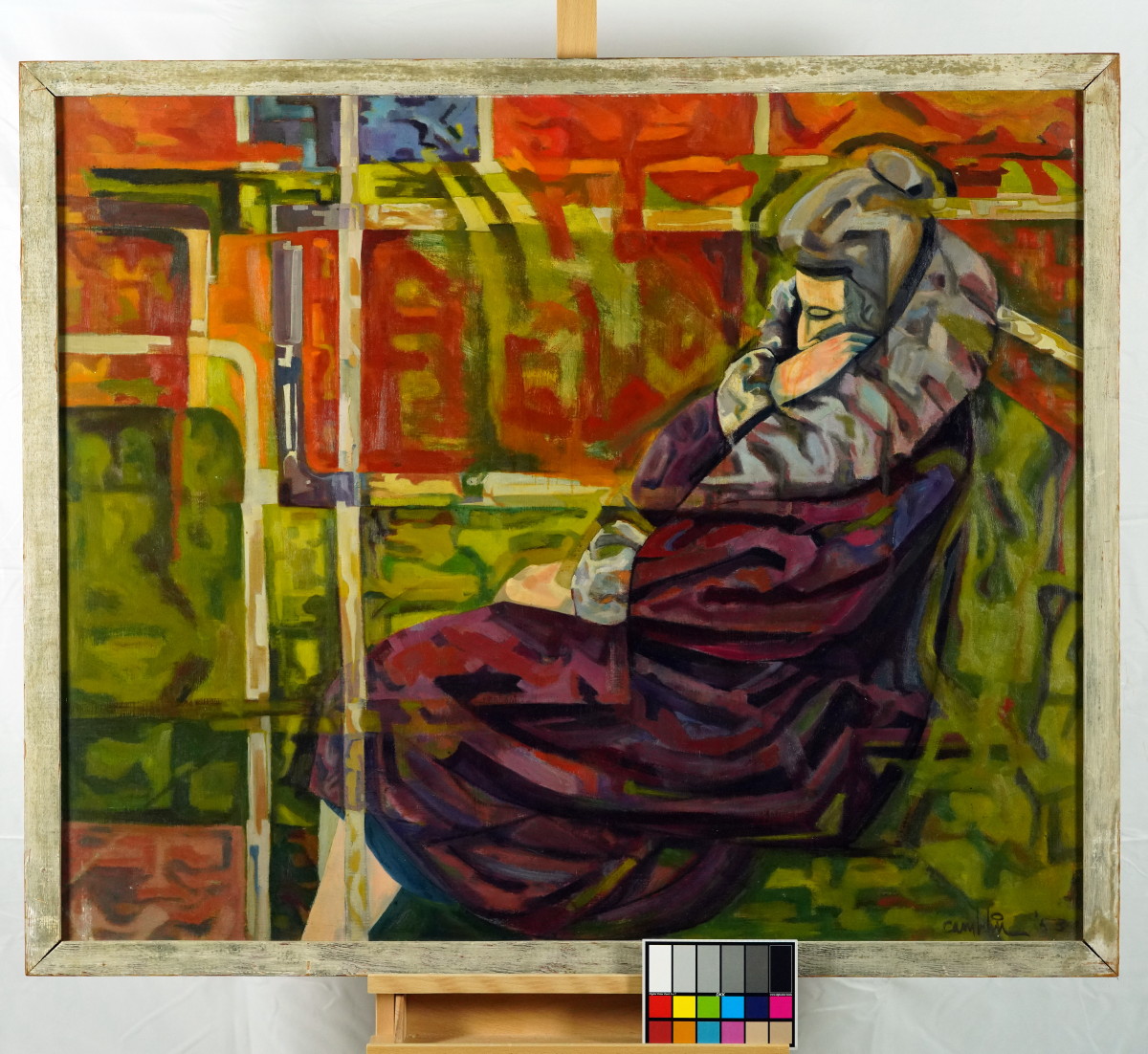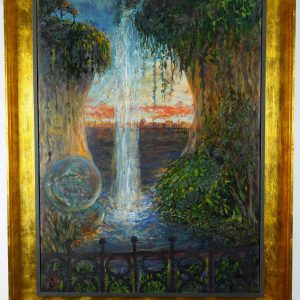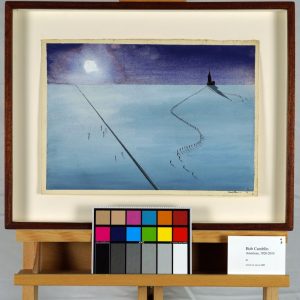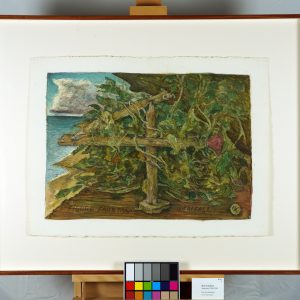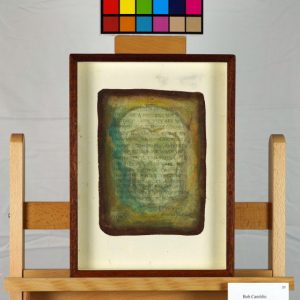Description
woman on a bus, 1953
Acrylic on board
Signed
38.75 x 47 in. (image)
41 x 50 in. (frame)
original, includes certificate of authenticity from ArtTrust
The painting “Woman On a Bus” depicts a figure seated in a contemplative pose, dressed in a flowing purple garment. The background is vibrant, with abstract shapes and blocks of color, primarily in shades of green, orange, and red. The figure’s face is partially obscured, adding a sense of introspection and mystery. The composition is structured with intersecting lines that create a fragmented, layered effect, giving the impression of multiple dimensions or perspectives.
From a Zen perspective, this image may suggest the practice of deep meditation or mindfulness. The seated figure, wrapped in layers, might represent the layers of thoughts and emotions one experiences while sitting in zazen (seated meditation). The overlapping colors and patterns could symbolize the transient nature of thoughts and the ever-changing experiences that arise during meditation. Zen teaches us to observe these fluctuations without attachment, perhaps reflected in the painting’s blend of stillness and movement.
The I Ching hexagram that comes to mind is Hexagram 52, Gen (Keeping Still, Mountain). This hexagram represents stillness and meditation. The image of the mountain symbolizes stability and groundedness, a fitting parallel to the figure’s tranquil posture. It encourages inner quietude and suggests that true peace is achieved by turning inward and remaining unmoved by the distractions of the outside world. The contrasting vividness of the background could represent the “ten thousand things” (all phenomena), while the figure remains centered amidst this multitude.
Combining the Zen and I Ching interpretations, the painting appears to be an exploration of inner stillness amid external chaos. The figure’s serene posture and the dynamic colors in the background create a visual contrast between inner calm and outer activity, echoing the experience of mindfulness meditation. This artwork serves as a reminder of the practice of returning to stillness, even when surrounded by life’s vibrant and chaotic energies.
The painting’s style may draw influence from Cubism, seen in the fractured and intersecting shapes reminiscent of artists like Georges Braque and Pablo Picasso. The use of color and layering also hints at an Expressionist approach, conveying emotional depth through a vivid palette. The juxtaposition of abstract elements with the recognizable human figure invites the viewer to interpret the artwork on multiple levels, bridging the gap between representational and non-representational art.
*Shipping cost will vary, please inquire at sales@camblingallery.com before purchasing.
Currently ships from Oregon, USA
Member of artnet? Apply for a discount! Inquire about intergallery and permanent loans for museums..
Reproductions of this drawing are available in multiple sizes!
Click here to use our high-resolution viewer!
This artwork is available with a non-fungible token to ensure traceability and transparency of provenance.
The royalty factor – Unlike traditional artworks, such as paintings, mosaics, statues, and the like, NFTs can be programmed to provide royalties to you every time the painting (and token) is sold and resold – for eternity. That mind-bending Camblin you sold could be worth millions one day and provide income for your great-great-great grandkids!
Anti-forgery – The central idea underpinning NFTs is that they are built on the blockchain, which is meant to offer advanced security. Think of it like an un-erasable and un-avoidable copyright.
Easy authentication – Another compelling aspect of NFT art and NFTs in general is the ability to quickly and easily authenticate items, as the record of ownership is scrupulously kept on the blockchain.
